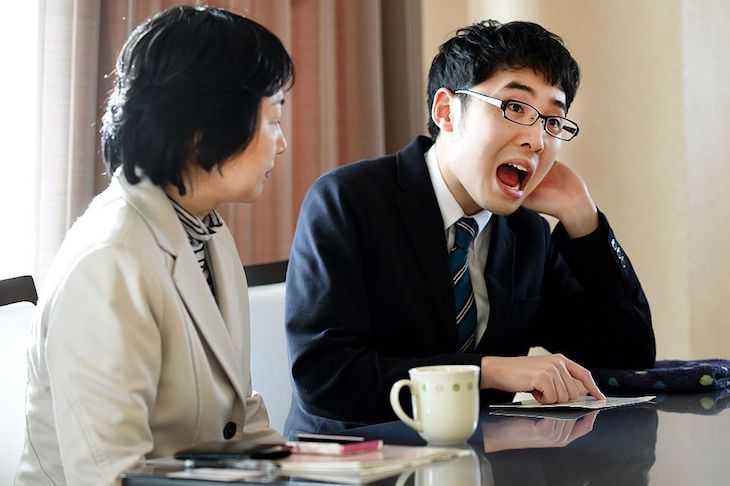The Reason I Jump, by the autistic Japanese teenager Naoki Higashida, was a surprise bestseller in 2013. Rendered as a series of answers to the questions that puzzled those around him, Higashida’s lyrical explanations of his compulsions and unusual behaviours were revelatory and uplifting. Readers felt they understood the condition better as a result. Higashida was described as non-verbal; he composed his earlier book by touching letters on a card with an alphabet grid or tracing them on the palm of a hand. The spelled-out words were transcribed and the text edited by his mother. This sequel, Fall Down Seven Times, Get Up Eight, has been edited together from Higashida’s subsequent blog posts and interviews he gave to the Big Issue in Japan.
Now an adult, he uses a computer and on occasion is able to read his writing out loud. But he still struggles with spontaneous conversation and describes his frustration when the wrong words come out, or he repeats scripted phrases like a tic. Higashida battles with his limited speech and takes pride in his often poetic writing; he reminds one of the heroic efforts that Christy Brown and Helen Keller went through in order to communicate.
Unlike Brown and Keller, there’s an additional layer between Higashida’s voice and the reader in that his writing has been translated into English by the novelist David Mitchell and his wife, K.A. Yoshida. Over the years they found the young Japanese writer’s insights into autism hugely helpful in understanding their own autistic son. In the introduction Mitchell describes his irritation with sceptics who have questioned Higashida’s diagnosis or his authorship. Some reviewers of the first book were baffled that he doesn’t conform to old generalisations that autistic people are too literal to use metaphors and are emotionally insensitive. There were others who wondered about Higashida’s writing technique, especially in the wake of cases where writing by non-verbal autistic people has proved to be generated by a facilitator or a family member who had unconsciously written what they would love to hear the autistic person say.
I don’t doubt that there are some people with an autism diagnosis who have such severe aphasia that it is difficult, if not impossible, for them to use spoken language but who do have the cognitive ability to write. I know two profoundly autistic adults who are minimally verbal and give the impression of also being severely learning disabled. They both disprove this by communicating using iPads. One of them taps out simple requests; the other writes essays and profound observations about the world.
Higashida writes a great deal about his gratitude to his family, particularly his mother. He worries about how he appears to the outside world, apologising and explaining his compulsions, physical behaviours and occasional meltdowns in terms of how shaming they are to those who support him. The difficulty Higashida experiences in making choices or dealing with new places and changes of plan will be familiar to anyone with autism in their family, and his explanations are enlightening. But it’s sad that he frames so much about autism from a negative perspective — a passionate special interest is presented as ‘obsessive behaviour’, ‘ingrained fixation’ or a ‘demonic curse’ rather than as something to be enjoyed by the autistic person and accepted by those around them.
No one person can speak for all those on the spectrum. Higashida acknowledges this: ‘I don’t claim for a second that everything I’ve written in my books applies to each and every neuro-atypical person.’ He may be representative of a subset of non-verbal autistic people who can acquire written language. But Mitchell claims more in his introduction: ‘What if the current mainstream assumption that people with severe autism have matching severe intellectual disabilities is our own decade’s big bad wrongness about autism?’
It is a horrible thought for those of us with non-verbal autistic family members that they would like to communicate but we haven’t given them the right tools. But it is also a worry that parents, after encountering Naoki Higashida, may then devote huge time and resources to assistive communication, only to find that it doesn’t unlock an intact intelligence, and plunges them even deeper into despair about their non-verbal children. If we accept that autism is a very broad spectrum, can we not accept that some autistic people may also have profound intellectual disabilities that preclude learning language? We can learn a lot from those like Higashida who describe brilliantly how autism affects them, but surely we can also embrace the many autistic people who will never achieve his fluency and value them regardless?






Comments